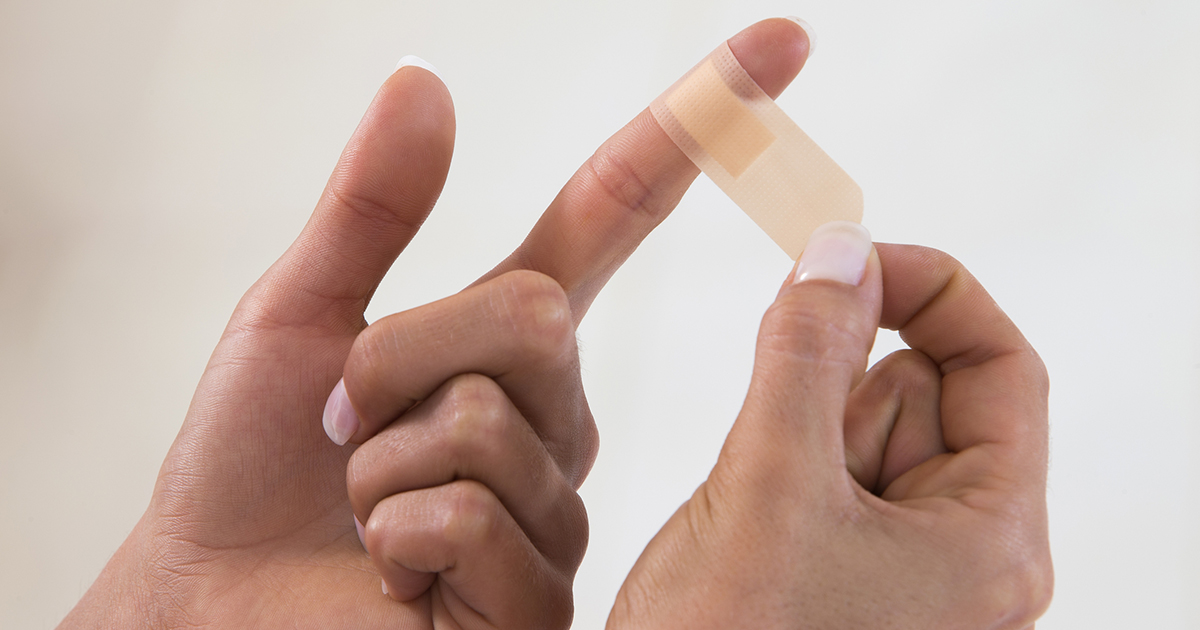Treatment Options For Herpetic Whitlow
Covering The Infection

Due to the highly contagious nature of herpetic whitlow and the weeping blisters it may produce, it is especially important that the affected area is covered with a clean dressing at all times. Most wounds heal more quickly when covered. The wound should be cleaned daily with gentle soap or alcohol swabs. Gauze dressings are ideal, and a new dressing should be placed on the wound at least once a day or more often if there is drainage from the wound. Dressings should be changed as soon as possible after using public transportation or restrooms or otherwise coming into contact with potentially infectious material to maximize the effectiveness and speed of healing. Depending on the severity of the wound, covering the infection with several layers of gauze dressing may be advisable. Additional layers can be added to provide cushioning, and the dressing should be secured with medical tape.
Learn about the next method of treating herpetic whitlow now.
Following Proper Hygiene

Practicing proper hand hygiene is especially important when managing herpetic whitlow. Following proper hygiene can prevent the development of herpetic whitlow and can help prevent a future episode in patients who have previously had the condition. In addition to washing hands with soap and water or using hand sanitizer frequently, following proper hygiene includes being mindful of how one uses the hands and fingers on a daily basis. Patients should take care to avoid touching their mouth, nose, and eyes when they have herpetic whitlow, as doing so can spread the infection to other parts of the body. In particular, patients should not wear contact lenses when they are suffering from herpetic whitlow due to the ease with which the herpes simplex virus can spread from the fingers to the eyes. Patients should also never attempt to drain any fluid that may be present in blisters at the infected site, as this can easily spread the virus to other areas.
Learn more about preventing the spread of herpetic whitlow now.
